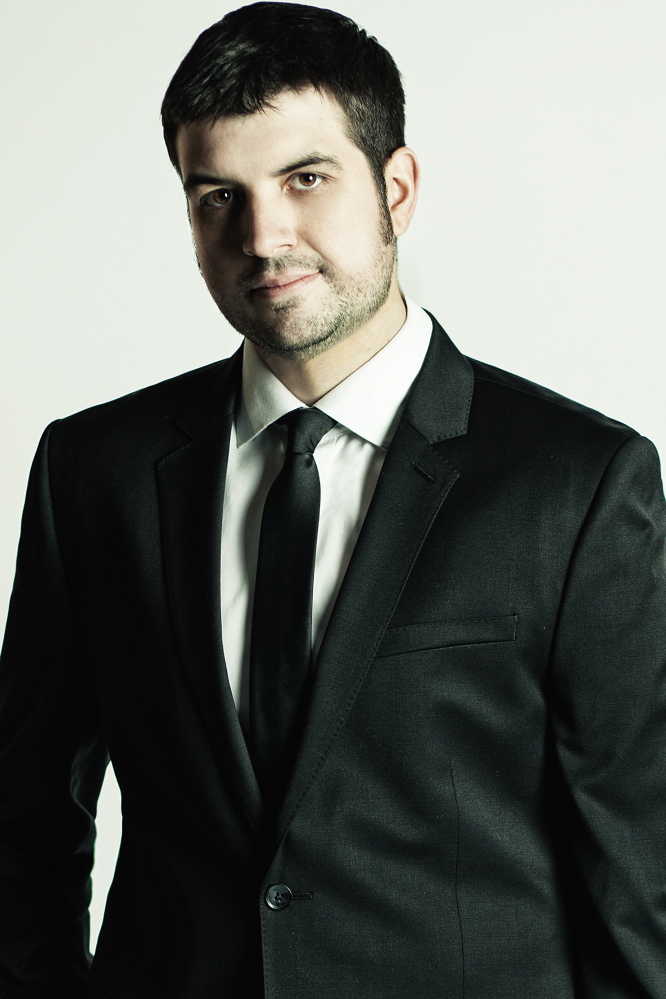The Portland Chamber Music Festival’s closing program, on Saturday evening at Hannaford Hall, focused on three composers who were in their early 30s when they wrote the works at hand. Two of them, Beethoven and Brahms, went on to greater heights, although the relatively early works the festival presented have interesting stories to tell. The third, Dan Visconti, is now 33, so his career is yet to unfold, although the early chapters have been impressive.
Beethoven was 30 when he composed the Serenade in D (Op. 25), in 1801, but it sounds like an even more youthful work, and indeed, sketches exist from as early as 1797. Its prominent flute line gives it an enduringly cheerful quality that sets it apart from the stormy, confrontational Beethoven of, say, the “Eroica” Symphony, composed only three years later.
This is the work of a young composer, eager to please and hoping to win aristocratic patronage, and it channels Haydn and Mozart at their most courtly. Even in its comparatively tumultuous third movement, the mask of politeness never drops. Laura Gilbert played the lively flute line in that spirit, and with considerable flair, and Jesse Mills, on violin, and Jonathan Bragg, on viola, played with a nimbleness and precision that underscored the work’s decorous elegance.
Brahms published his Piano Quintet in F minor (Op. 34) in 1865, when he was 32, but by then it had gone through several transformations: It began as a string quintet, in 1862, and was rescored as a work for two pianos before Brahms gave it its final form. Brahms’ musical world was very different from Beethoven’s, not least because Beethoven transformed just about every aspect of composition. So Brahms, as a young man, did not deal in decorous veneers, and from its opening bars, the F minor Quintet surges with passion, tempered only momentarily by its quieter, softer-edged Andante second movement.
The performance, for which Mills was joined by Jennifer Elowitch, violin, Dov Scheindlin, viola, Thomas Kraines, cello and Rieko Aizawa, piano, conveyed the intensity of Brahms’ full-throttle Romanticism in the outer movements and in the driven third movement Scherzo, and gave a plangent, soulful account of the Andante. As heated as the music gets, they kept its textures remarkably transparent: Felicitous turns in the viola and cello lines were never buried, yet the ensemble produced a solid, powerful sound.
Visconti’s “Lonesome Road,” played between the Beethoven and Brahms works, inhabits a musical universe that has changed radically since Brahms. That’s not to say that there aren’t points of connection. Although Visconti uses modernist techniques – having his pianist bypass the keyboard and draw sounds directly from the piano’s strings, or having his string players bend notes, or use the eerie, glassine timbres of artificial harmonics – much of his score is consonant, melodic and packed with drama. He uses a time-honored format, as well: “Lonesome Roads” is a piano trio.
The inspiration for the work, however, is entirely modern. During a series of cross-country drives, Visconti explained from the stage just before the performance, he began thinking about the music of the road, by which he meant everything from mix tapes to the rhythmic and mechanical sounds of the road and his car. A musical translation of those sounds, as well as passages that borrow the energy of rock and the rhythmic variety of jazz, can be heard in the score. Emotional extremes are captured too, from the meditative delicacy of the opening piano passage to the highly charged perpetual motion writing of the finale.
Two of the three musicians here – Mills and Aizawa – are on the superb recording of “Lonesome Roads” released by Bridge Records in 2012, the year Visconti completed the score. Their performance here, with Kraines on cello, was even more assured, and more vividly colorful, than the performance on the recording. If the performance left you curious about Visconti’s other works, that disc, also called “Lonesome Roads,” includes seven shorter chamber works that provide a broader view of Visconti’s style.
Allan Kozinn is a former music critic and culture writer for The New York Times who lives in Portland. He can be contacted at:
allankozinn@gmail.com
Twitter: kozinn
Send questions/comments to the editors.



Comments are no longer available on this story